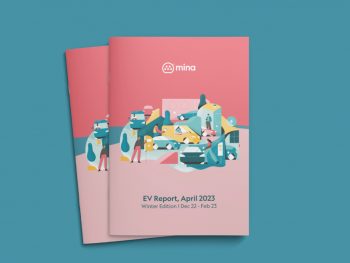Advisory Electricity Rate still short-changing EV drivers for majority of fleet journeys
The cost to charge an EV has stabilised in recent months, but fleets using the Advisory Electricity Rate are still leaving EV drivers out of pocket for business mileage reimbursement.

Despite the increase in the Advisory Electricity Rate, and the new process for calculating it, the AER remains out of touch with charging costs
Following a year of climbing charging prices, the latest quarterly report from EV fleet payment specialist Mina, which covers December 2022 to February 2023, finds that the average cost of home charging only increased by 1p to 31p per kWh compared to the previous quarter, while public charging tariffs increased by 4p, to 74p per kWh.
As a result, the average pence per mile cost for driving an electric car stayed flat, at 9p per mile, while the average cost for an electric van rose only 1p, to 14p, compared to autumn 2022.
These figures are, however, still higher than the Advisory Electricity Rate, which increased to 8ppm from 1 December 2022 (and 9ppm from 1 March) but still lagged behind the real outlay for most business journeys.
In fact, Mina’s research has found that despite the increase in the AER, and the new process for calculating it, the AER remains out of touch with charging costs.
For one in five charges, the business pays too much. For four in five charges, the driver is out of pocket.
And Mina has reiterated its previous comments that using a single figure for such a complex area of driving costs is still not a suitable approach.
CEO Ashley Tate said: “The problem is, it will never be fair, and now more businesses are losing out if they use it. No matter how much effort goes into producing this single figure, somebody, somewhere is usually on the wrong end of it.”
On the plus side, the report shows that the cap on domestic electricity has certainly helped stabilise prices for home charging, while public charging prices have also levelled out.
“While we’d like to see these costs coming down over the summer months, at least companies running electric vehicles can at last plan costs with more certainty than before,” Tate added.
“In fact, our research in the report shows that electric cars and vans are still on the whole extremely cost-effective when compared to petrol and diesel – even though the cost of fuel has reduced in the past few months.”
The latest report also contains data on home charging habits. It shows when drivers plug in, when they charge, the amount of power they need, and also gives insights into how the domestic grid will cope as the number of EVs climbs.
Mina’s new report, which also includes analysis of how the winter months affected the range and cost of electric cars and vans, can be downloaded for free here.












